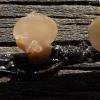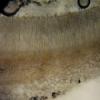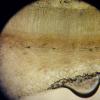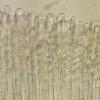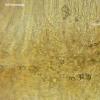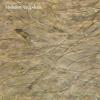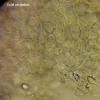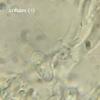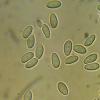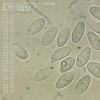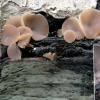
07-09-2025 11:34
 Zuzana Sochorová (Egertová)
Zuzana Sochorová (Egertová)
Hello,I have identified this fungus as Hymenoscyph

05-09-2025 18:53
 Robin Isaksson
Robin Isaksson
Hi! Spores 1 septate; 12-13 x 3um Hairs 35-75

05-09-2025 09:32
 Nicolas VAN VOOREN
Nicolas VAN VOOREN
Bonjour, hi everyone,Do you know where the fungari

03-09-2025 21:59
Philippe PELLICIERLa Léchère, Col de la Madeleine, alt 1970m, au s

04-09-2025 20:11
Åge OterhalsSaccobolus on dear droppings. Can any of you confi

03-09-2025 12:44
Hi to somebody.I would like to know your opinion o

31-08-2025 19:41
Hi to someone.I need to download this issue of Sve
Ciboria on branch of Salix
Mirek Gryc,
08-05-2020 19:27
Hi.
Two ascocarps growing on a thin branch of Salix.
I do not have the key for this type but I also do not know the species to which the characteristics of my collection would correspond.
On the Zotto disk I also found the Ciboria collection on Salix. The microscopic features of my collection exactly match the collection presented on the Zotto disk, with one minor exception: in mine, the spores are slightly larger.
In addition, the sporocarps presented on the Zotto disk have long stems and grow on leaves.
I think they can be the same species even despite slight macroscopic differences.
I would like to know your opinion.
Mirek
Hans-Otto Baral,
08-05-2020 20:43

Re : Ciboria on branch of Salix
Hi Mirek
there are indeed similarities, including the binucleate spores.
But did you compare Ciborinia pseudobifrons? If you go there (now Scleromitrula), there is a form on Populus bark which could be what you have. And it could be that My finds on Salix leaves is the same species.
Zotto
Mirek Gryc,
09-05-2020 08:21
Re : Ciboria on branch of Salix
Hi Zotto.
I completely agree with your opinion.
I did not find the presence of sclerota, so I did not look in Sclerotiniaceae.
Features of some collections differ in small details from mine but in general, my collection definitely belongs to this group.
Thank you very much and I wish you health!
Mirek
I completely agree with your opinion.
I did not find the presence of sclerota, so I did not look in Sclerotiniaceae.
Features of some collections differ in small details from mine but in general, my collection definitely belongs to this group.
Thank you very much and I wish you health!
Mirek
Michel Hairaud,
09-05-2020 14:40

Re : Ciboria on branch of Salix
Hi Zotto, Myrek, and everyone,
There must be a late paper I overlooked as I did not know such a combination as Scleromitrula pseudobifrons.
If so , would you please share this publication ?
Amitiés. Michel
Hans-Otto Baral,
09-05-2020 17:22

Re : Ciboria on branch of Salix
Hi Michel
it seems unbelievable, but the only available sequence of pseudobifrons in GB refers to a Psathyrella :-(
There is also no CBS culture. So we cannot argue with genetics at the moment, which seems quite important in Sclerotiniaceae.
The synonymization of Ciborinia with Scleromitrula was done in 1997, since then there is no home for C. Ciboria pseudobifrons. If the old concept of Ciborinia was not heterogeneous, we must conclude that also C. pseudobifrons is a Scleromitrula.
Zotto
Michel Hairaud,
09-05-2020 18:24
Hans-Otto Baral,
09-05-2020 22:36

Re : Ciboria on branch of Salix
And it is one of those unsolved cases, because typical C. pseudobifrons on leaves has striate spores.

